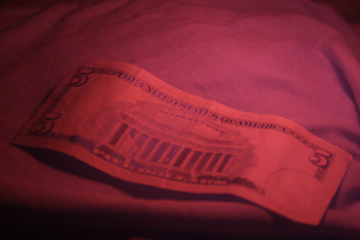
Home > Essays > On Art Gallery Commissions
Artists new to exhibiting in galleries are sometimes surprised by the concept of commission. But the thing is, running a gallery almost always involves a variety of expenses, and even the small expenses can add up.

Besides, if there is no gallery commission, maybe you have to ask: what incentive is there for the gallery to promote the show and seek sales?
I know of a couple of artists who are thinking of opening art galleries in the next couple of years, give or take. The proper gallery commission percentage is an issue they'll have to grapple with. It may not seem like the most important issue to deal with, but it's one that needs to be taken care of before consignment forms can be finalized. The range is at least narrowed down a little bit beforehand, as this chart shows:
| Min | Max | Circumstance |
|---|---|---|
| 0% | The gallery has some kind of corporate sponsorship. (This is also an appropriate commission percentage for most pop-up shows, and also for vanity galleries). | |
| 1% | 29% | Special or unusual circumstances. |
| 30% | 39% | Typical art gallery in its permanent space. |
| 40% | 49% | The gallery is providing significant material support to the artist. |
| 50% | 99% | The gallery is providing significant material support to the artist and doing a lot of the work to create the pieces, to the point where one begins to doubt who really is the artist. |
| 100% | This is for a fundraiser for a cause the artist agrees with and believes in. | |
Many have presented convincing arguments that a gallery deserves 50% commission, especially those galleries at which the staff work hard to make the presentation flawless and bring the art to the attention of wealthy collectors. I imagine most artists would gladly agree to 50% commission if they felt sales were practically guaranteed. But one of the problems with 50% is that it implies equal co-authorship of the artwork. A potential problem is that some of the artists, trying to get what they would get at a gallery that charges lower commission, might price the work beyond what the gallery's most loyal customers can afford.
No one notices when all the artists' names are correctly spelled on the tags or the work list, when the artwork is perfectly spaced on the walls, when the refreshments table is appropriately stocked, etc. Those things don't just happen, they take work. But sales can't happen if the artwork doesn't exist in the first place. Buyers have been known to sometimes buy directly from the artist, bypassing the gallery altogether.
Now, 25% is too low. When matters of presentation are left to the exhibiting artists themselves, the work list is printed late and is still riddled with errors, some of the pieces are not properly lit, some wines are not properly chilled, etc. The gallery staffers, even if they are artists themselves, are in a better position to properly attend to these matters, and they deserve to see some reward, however indirect, for their efforts. This kind of work does not guarantee sales, but in the absence of it, sales are unlikely.
When a sale occurs in a gallery, the gallery deserves a commission, but the artist who actually created the artwork deserves a majority of the proceeds. From a purely theoretical point of view, one third is the perfect commission rate. But 33% is not exactly one third, nor is 33.3%, nor 33.33%, etc.
A commission percentage of 33% could make artists feel obligated to choose prices that are whole dollar multiples of 3. However, as the commission calculator below shows, that might still require cents for the artist's cut and the gallery commission. I think that because 30% and 35% allow for quicker mental arithmetic, the transaction is a little bit more transparent and trustworthy.
For the most part, buyers are unaware of what the gallery commission percentage is. As for taxes, I'm not sure. I've heard some people say that non-profit galleries in Michigan don't have to collect sales tax. Whatever the reality of this is, I'm sure that the tax is charged on the price the buyer sees on the wall tag or the work list, and that the artist need not be concerned with this detail.
The following commission calculator lets you see the effect of different commission percentages in the 30% to 39% range.
Given that artists seem to have a greater propensity for dyslexia, an obvious detail that is worth emphasizing is that the price tag is decided first, and then the gallery's commission is decided as a percentage of that, which in turn determines the artist's cut. While it's certainly possible to determine the artist's cut first and then work backwards to figure the price tag, the mathematical confusion this could cause a dyslexic artist is just not worthwhile.
Most galleries in Detroit charge commission in the 30% to 40% range. The Red Bull House of Art does not charge commission, but the incentive for sales there is free publicity and good will for the Red Bull brand. I know of one highly conceptual gallery in Detroit that charges 50% commission. Something tells me that when a sale does occur there, the artist is too surprised to complain about the 50% commission. There also seem to be cases at that gallery where the staffers do the majority of the work of creating the pieces.
Bottom line: unless you have a good reason for a different percentage at your art gallery, go with commissions of 30% or 35%.